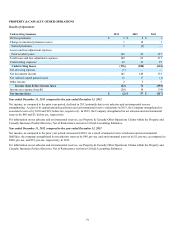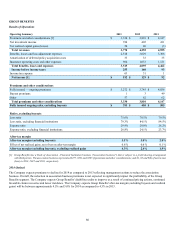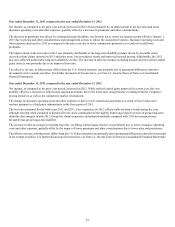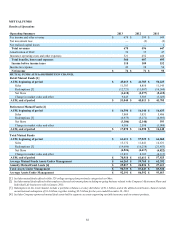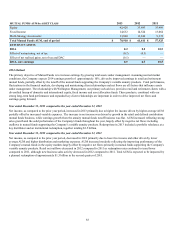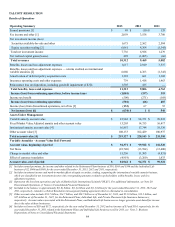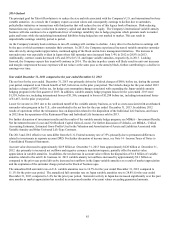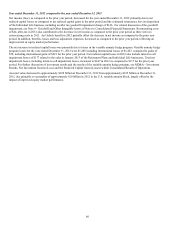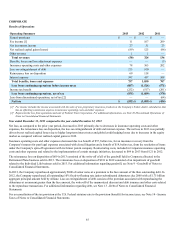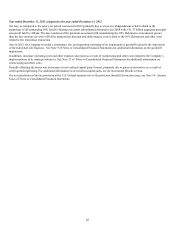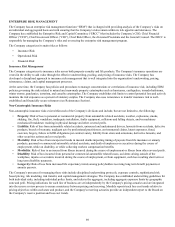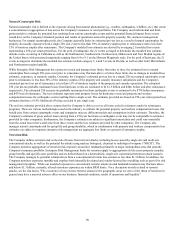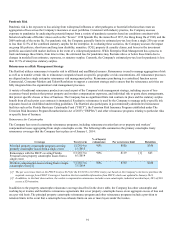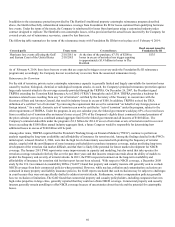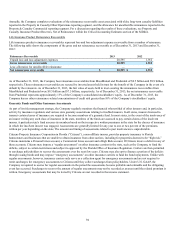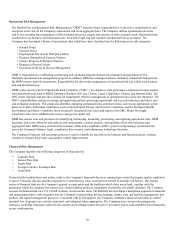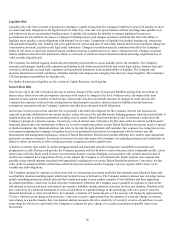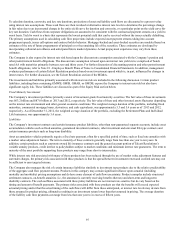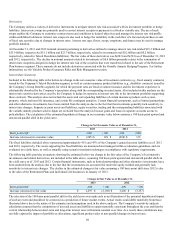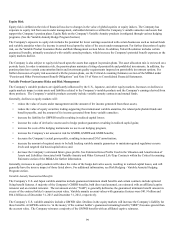The Hartford 2013 Annual Report Download - page 89
Download and view the complete annual report
Please find page 89 of the 2013 The Hartford annual report below. You can navigate through the pages in the report by either clicking on the pages listed below, or by using the keyword search tool below to find specific information within the annual report.89
ENTERPRISE RISK MANAGEMENT
The Company has an enterprise risk management function (“ERM”) that is charged with providing analysis of the Company’s risks on
an individual and aggregated basis and with ensuring that the Company’s risks remain within its risk appetite and tolerances. The
Company has established the Enterprise Risk and Capital Committee (“ERCC”) that includes the Company’s CEO, Chief Financial
Officer (“CFO”), Chief Investment Officer (“CIO”), Chief Risk Officer, the divisional Presidents and the General Counsel. The ERCC is
responsible for managing the Company’s risks and overseeing the enterprise risk management program.
The Company categorizes its main risks as follows:
• Insurance Risk
• Operational Risk
• Financial Risk
Insurance Risk Management
The Company categorizes its insurance risks across both property-casualty and life products. The Company's insurance operations are
vested in the ability to add value through the effective underwriting, pooling, and pricing of insurance risks. The Company has
developed a disciplined approach to insurance risk management that is well integrated into the organization's underwriting, pricing,
reinsurance, claims, and capital management processes.
At the same time, the Company has policies and procedures to manage concentrations or correlations of insurance risk, including ERM
policies governing the risks related to natural and man-made property catastrophes such as hurricanes, earthquakes, tornado/hailstorms,
winter storms, pandemics, terrorism, and casualty catastrophes. The Company establishes risk limits to control potential loss and actively
monitors the risk exposures as a percent of statutory surplus. The Company also uses reinsurance to transfer insurance risk to well-
established and financially secure reinsurers (see Reinsurance Section).
Non-Catastrophic Insurance Risks
Non-catastrophic insurance risks exist within each of the Company's divisions and include, but are not limited to, the following:
• Property: Risk of loss to personal or commercial property from automobile related accidents, weather, explosions, smoke,
shaking, fire, theft, vandalism, inadequate installation, faulty equipment, collisions and falling objects, and/or machinery
mechanical breakdown resulting in physical damage and other covered perils.
• Liability: Risk of loss from automobile related accidents, uninsured and underinsured drivers, lawsuits from accidents, defective
products, breach of warranty, negligent acts by professional practitioners, environmental claims, latent exposures, fraud,
coercion, forgery, failure to fulfill obligations per contract surety, liability from errors and omissions, derivative lawsuits, and
other securities actions and covered perils.
• Mortality: Risk of loss from unexpected trends in insured deaths impacting timing of payouts from life insurance or annuity
products, personal or commercial automobile related accidents, and death of employees or executives during the course of
employment, while on disability, or while collecting workers compensation benefits.
• Morbidity: Risk of loss to an insured from illness incurred during the course of employment or illness from other covered perils.
• Disability: Risk of loss incurred from personal or commercial automobile related losses, accidents arising outside of the
workplace, injuries or accidents incurred during the course of employment, or from equipment, each loss resulting short term or
long term disability payments.
• Longevity: Risk of loss from increased life expectancy trends among policyholders receiving long term benefit payments or
annuity payouts.
The Company's processes for managing these risks include disciplined underwriting protocols, exposure controls, sophisticated risk
based pricing, risk modeling, risk transfer, and capital management strategies. The Company has established underwriting guidelines for
both individual risks, including individual policy limits, and risks in the aggregate, including aggregate exposure limits by geographic
zone and peril. Pricing indications for each line of business are set independently by the Company's pricing actuaries and are integrated
into the reserve review process to ensure consistency between pricing and reserving. Monthly reports track loss cost trends relative to
pricing objectives within each state and product, and the Company's reserving actuaries provide an independent report to the Board on
the Company's reserve position and loss cost trends.


